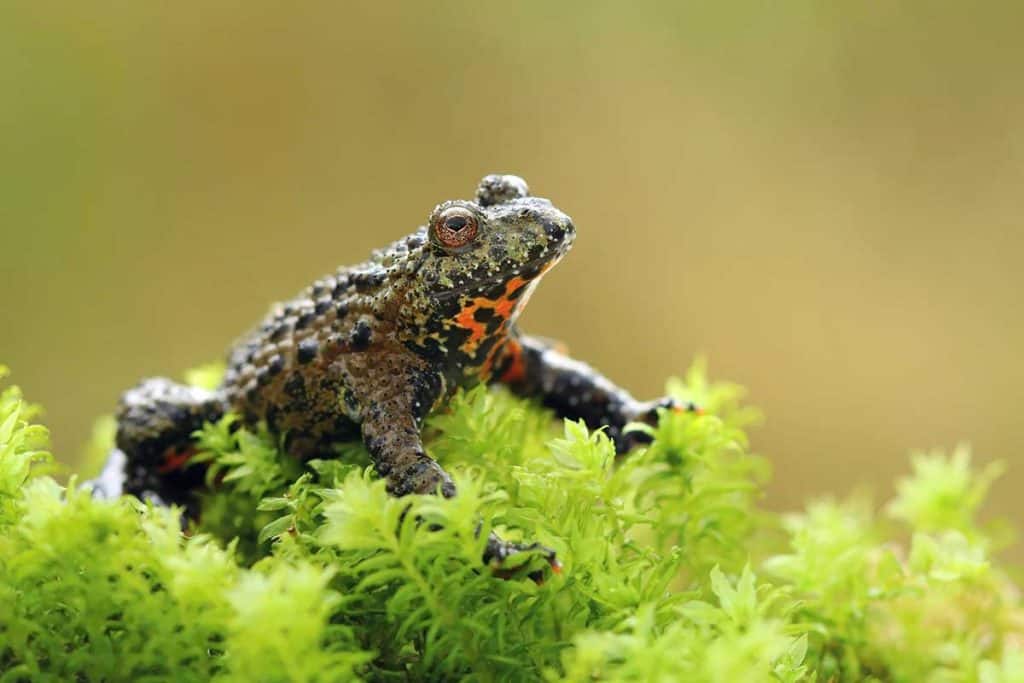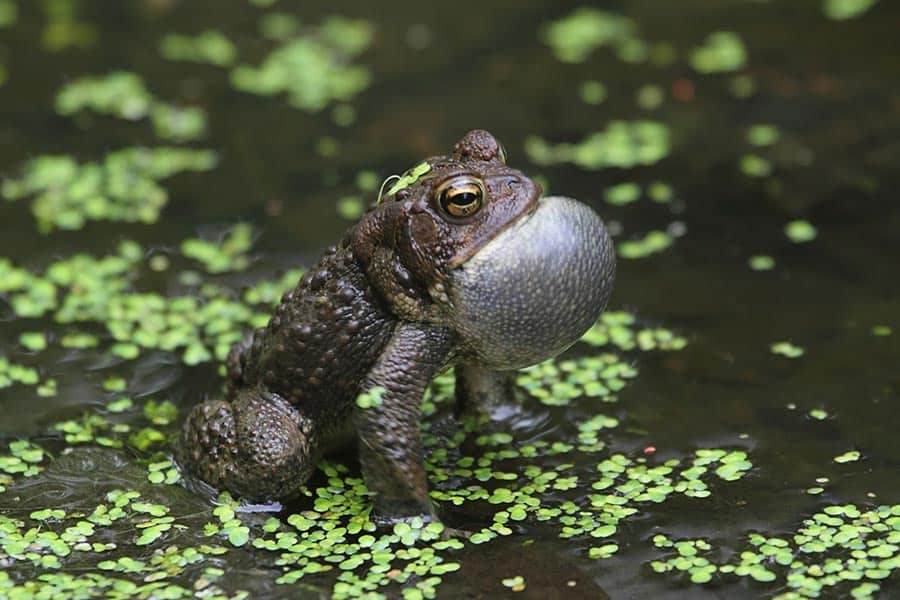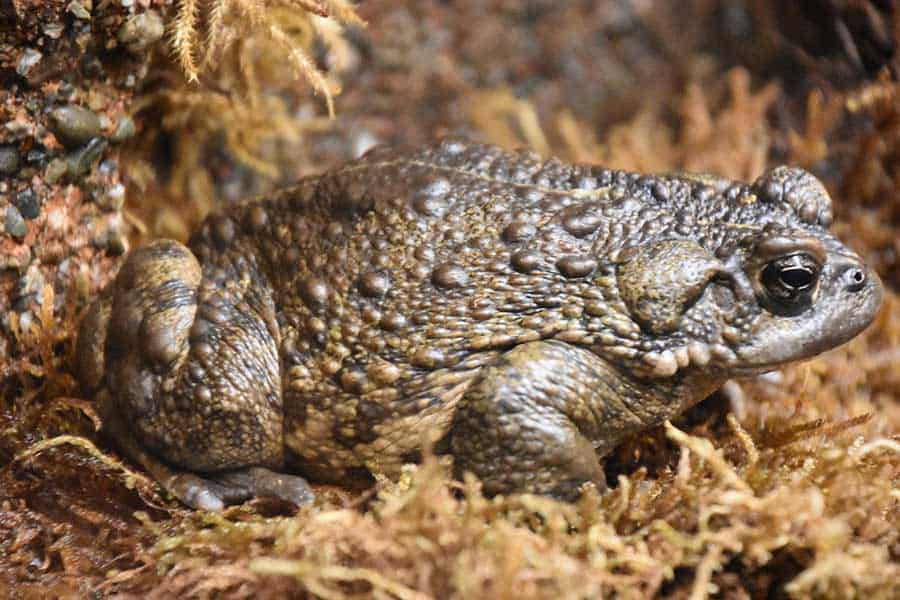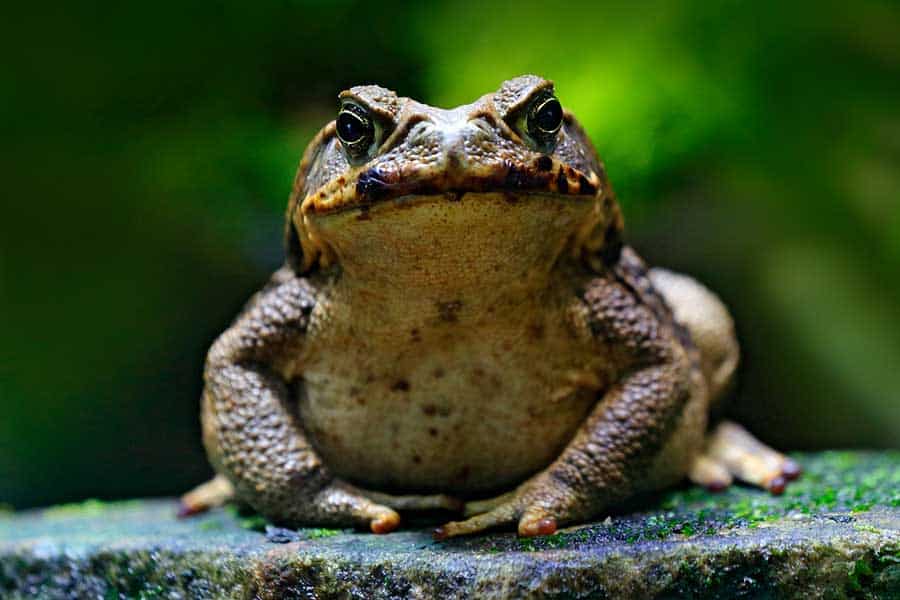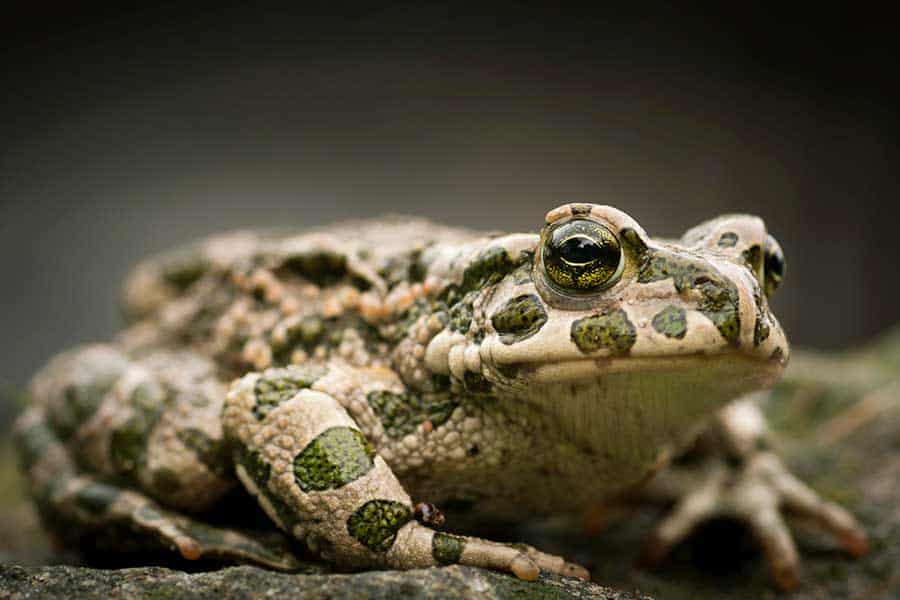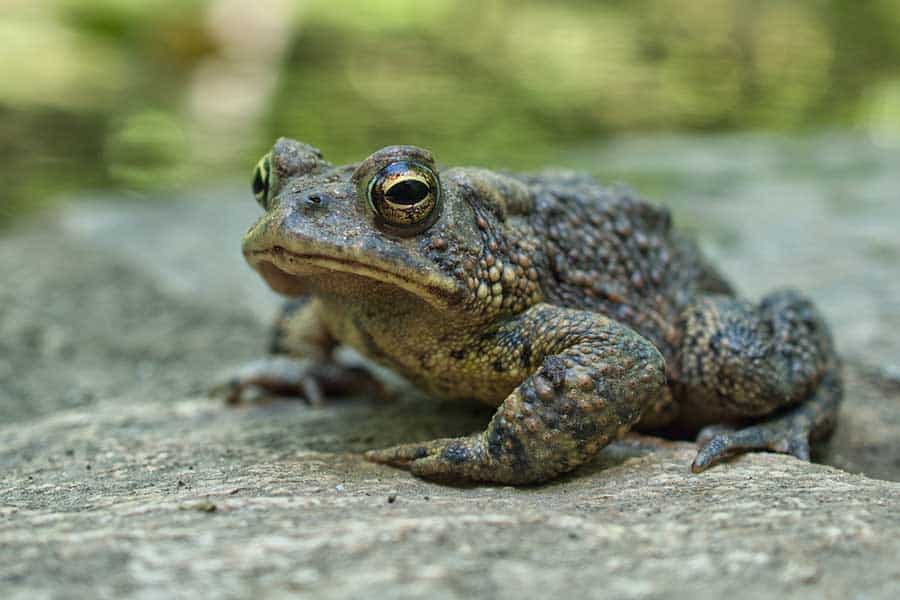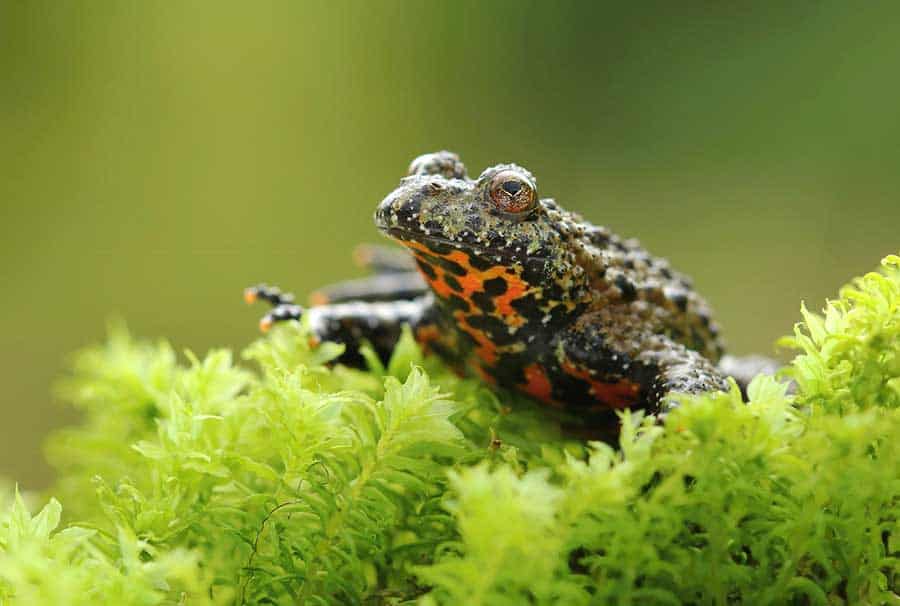Are you looking for a different type of pet you can keep in a tank to brighten up your home? If so, why not consider a toad? While frogs are generally considered the cuter cousins, toads tend to be more active and responsive, making them more interesting pets to have around the house.
However, more than 500 different species of toad have been described, and they are not all the same! Generally speaking, you want a toad that has lots of personality and is fun but also relatively easy to look after.
Below are our top picks for the best toads to keep as pets. But remember, no matter which kind of toad you choose, they shouldn’t be handled regularly. While they won’t give you warts, they can secrete toxins that can irritate your skin and make you feel sick.
Best Toads for Pets — 6 Lovable Species
1. American Toad
One of the cool things about the American Toad is their chameleon-like skin that can change colors between brown, green, and yellow.
They are easy to look after, but they shouldn’t be handled. They give off a chemical called bufotoxin that, while it isn’t deadly by any means, can irritate your eyes.
They grow to be a very manageable 2 to 3.5 inches in size and can live for up to 15 years if they are cared for properly. They should be housed in at least a 10-gallon tank (or larger) kept at 60F to 70F. As carnivores, they should eat a diet of small insects and earthworms.
This is a nocturnal toad, so expect them to be most active at night.
2. California Toad
If you want a classic toad that looks, well, like a toad, then the California toad is a great choice. They are also very easy to look after, so they are appropriate pets even for beginners. They tend to be fairly small in size, measuring around 2.25 to 2.5 inches when they are fully grown, and they live just five years on average.
These guys don’t really like to be handled and do best in a tank, which should be at least 10 gallons in size. When threatened or startled, they can give off a mild toxic secretion, so be sure to wear protective
They should be fed daily as babies and two to three times a week as adults. They can eat a variety of foods, most notably standard fish food pellets, blood worms, and shrimp.
Their tank should be kept at around 65F to 85F with 60% humidity. You will want a low-level UVB light, but they don’t tend to spend too much time basking, as they are nocturnal. Make sure they have plenty of places to hide and rest during the day.
3. Cane Toad
The Cane Toad is a good choice if you want a pretty large toad, since they tend to grow to be around 4 to 6 inches. They will probably also be with you for a while, as they can live for around 15 to 25 years with optimal care.
Their fairly large size means they need a big tank–probably at least 20 gallons–but aside from that, they are easy to care for. Their tank should be kept at a minimum of 75F. They don’t need any additional equipment such as a UVB light. In fact, don’t leave them in direct sunlight, or you might accidentally bake them!
Cane toads eat a pretty standard and varied diet of crickets, worms, various other large insects like roaches and beetles, and even small rodents if you can stomach feeding them.
These rather large toads also tolerate handling more than others, so they are a good choice if you want a toad that you can pet on occasion. But be careful, as they tend to be escape artists!
4. European Green Toad
The European Green Toad can be a bit harder to come by as a pet, but makes a great addition to the home with its spotted back that can actually range from green to dark brown and even red. It can change color in response to heat and light.
These are medium to large toads that reach a maximum size of about 4 inches, so they will need about a 20-gallon tank to feel comfortable. They eat a standard diet of insects and invertebrates.
European Green Toads are native to Europe, from France to the Balkans, so they are accustomed to a slightly cooler climate and should never be kept in temperatures greater than 80 degrees Fahrenheit.
These toads are intelligent and responsive. If you touch their tank, they will immediately look for shelter. But if you open the tank to provide food, they will head directly for it.
5. Oak Toad
The oak toad is a tiny toad — one of the smallest on this list, in fact — measuring just 0.75 to 1.3 inches! Its small size makes it a great choice if you don’t have a lot of space to spare. These particular toads can be kept in tanks as small as 10 gallons. Make their tank habitat like their savannah environment.
They need to be kept at a temperature of 75 to 80F with 50% to 60% humidity.
Oak toads don’t tend to bask, but a UVB light will still help protect against microbial bacteria. As insectivores, they primarily eat bugs like small crickets, roaches, and worms.
Unlike many other toad species, oak toads are diurnal and most active during the day, which makes them a bit more entertaining for younger owners.
6. Oriental Fire-Bellied Toad
This is another popular pet toad because of its distinctive look. These vibrant toads are little guys that measure only about 2 inches long, and they have a shiny red and green color with black spots.
They can be housed in tanks as small as 10 gallons, which should be kept at around 62F to 82F. Temperatures should be slightly warmer during the day and cooler at night. They mainly eat small insects as well as common feeder worms like mealworms and waxworms.
The more attractive the toad, it seems the more likely they are to secrete a toxin! As you might have guessed, this one is not for handling.
Gravel is best avoided in their tank substrate. They do best with soft, moisture-retaining substrates like sphagnum moss and coconut fiber.
Top Tips for Looking After Toads
No matter which toad you end up bringing home, here are some of our top tips for caring for these unique amphibians.
Create a Large Habitat
Toads tend to need a large habitat that can accommodate both their aquatic and terrestrial behaviors as amphibians.
All toads, even the smallest species, will need a tank at least 10 gallons in size. If your toad will eventually grow to be larger than around 3 inches as an adult, they will probably need a 20-gallon tank or larger.
Provide a Water Bowl
All toads need a large but shallow and non-porous
Mist Their Enclosure Regularly
Use a misting device to keep the substrate of one side of the tank moist, but not wet, while maintaining the other half of the habitat dry. Your toad should always be able to choose which is more comfortable for them. Very few toads are fully aquatic–most are both aquatic and terrestrial to some extent.
Establish Consistent Humidity & Temperature Conditions
Different species of toads need different humidity levels, but generally, somewhere between 50% and 60% is suitable for most species. Humidity levels higher than 70% has the potential to kill some species of toads.
Temperature requirements also differ, but the average is around 70F to 80F. Ideally, your toad’s enclosure should be a bit hotter during the day and a bit cooler at night. Be sure to carefully research your toad’s species and their specific care requirements.
Simulate Sunlight
It is not a good idea to keep your toad tank in direct sunlight, as this can raise the temperature and lower humidity very quickly and kill your toad.
It’s best to use a fluorescent light to ensure your toad gets a proper day/night cycle with 10 to 12 hours of simulated sunlight a day. A low-level UVB light is also recommended; just make sure nocturnal frogs have somewhere to hide from this.
Use the Right Substrate
When creating the substrate of your toad’s habitat, use something soft, loose, and moisture-retaining like coconut fiber, dampened sphagnum moss, leaf litter, or cypress mulch. You can mix these substrates to add variety to the enclosure.
Avoid substrates like gravel or chip bark, as your toad may ingest these, which can cause gastrointestinal problems. Artificial turf is also not recommended.
For toads that like to burrow, like the tomato toad, make sure their substrate is at least 6 inches deep.
Establish a Routine
Toads learn to recognize routine quite quickly, and if you feed them at the same time each day, you will find them waiting to eat. Establishing a routine early on can help your toad feel safe and comfortable.
Feed Every Other Day
While juvenile toads need to be fed daily, most adult toads should only be fed every other day. Most species are insectivores and eat crickets, roaches, mealworms, and other common feeder insects. They get the best nutrition if these insects have been recently fed, or “gut-loaded,” before being fed to your toad.
Minimize Handling
Toads generally do not like to be handled, and they are best left to themselves in their tanks. In addition to them simply not enjoying being handled, many species of toad excrete mild toxins that can irritate your skin and even cause you to feel sick if you accidentally ingest it.
Always wear
Be Careful About Keeping Toads Together
Toads are prolific breeders, so if you keep a male and female toad together, prepare yourself for hundreds of tadpoles. It is also best not to house male toads together, as they can be highly territorial. Whenever you house toads together, make sure they are of roughly the same size. Otherwise, larger toads can sometimes eat smaller toads.
Be Aware of Shedding
Toads shed their skin relatively often, and they will usually eat their shed skin afterward. This is mainly done as an instinctive behavior to hide their presence from potential predators rather than for nutritional value, so you can remove the shedded skin from their tank if you wish.
You can learn more about other exotic pets such as turtles and tortoises on our website.
FAQs About Pet Toads
Do toads need a heat lamp ?
You will need to heat your toad’s tank to a good temperature for them. However, they do better with ambient heating as opposed to a direct
Are toads poisonous to humans?
Many toads excrete a mild toxin from their skin to fight off predators, but it is not particularly dangerous to humans. It may, however, irritate your skin and can make you unwell if ingested. Always wear
The Verdict
Toads make great pets if you are looking for a fun, unique animal to keep in a tank at home. Many species are more active than frogs and a lot of other tank-dwelling animals, so they tend to provide a bit more entertainment to their pet parents.
Toads are relatively easy to care for once you have established the right environment for them. It is also a good idea to choose a species of toad that is relatively easy to care for, such as any of the toads we have included in our list.
I think the American toad is the best pet toad species because of their easy care and gorgeous chameleon-like skin. What is your favorite pet toad? Share with the community in the comments section below.

